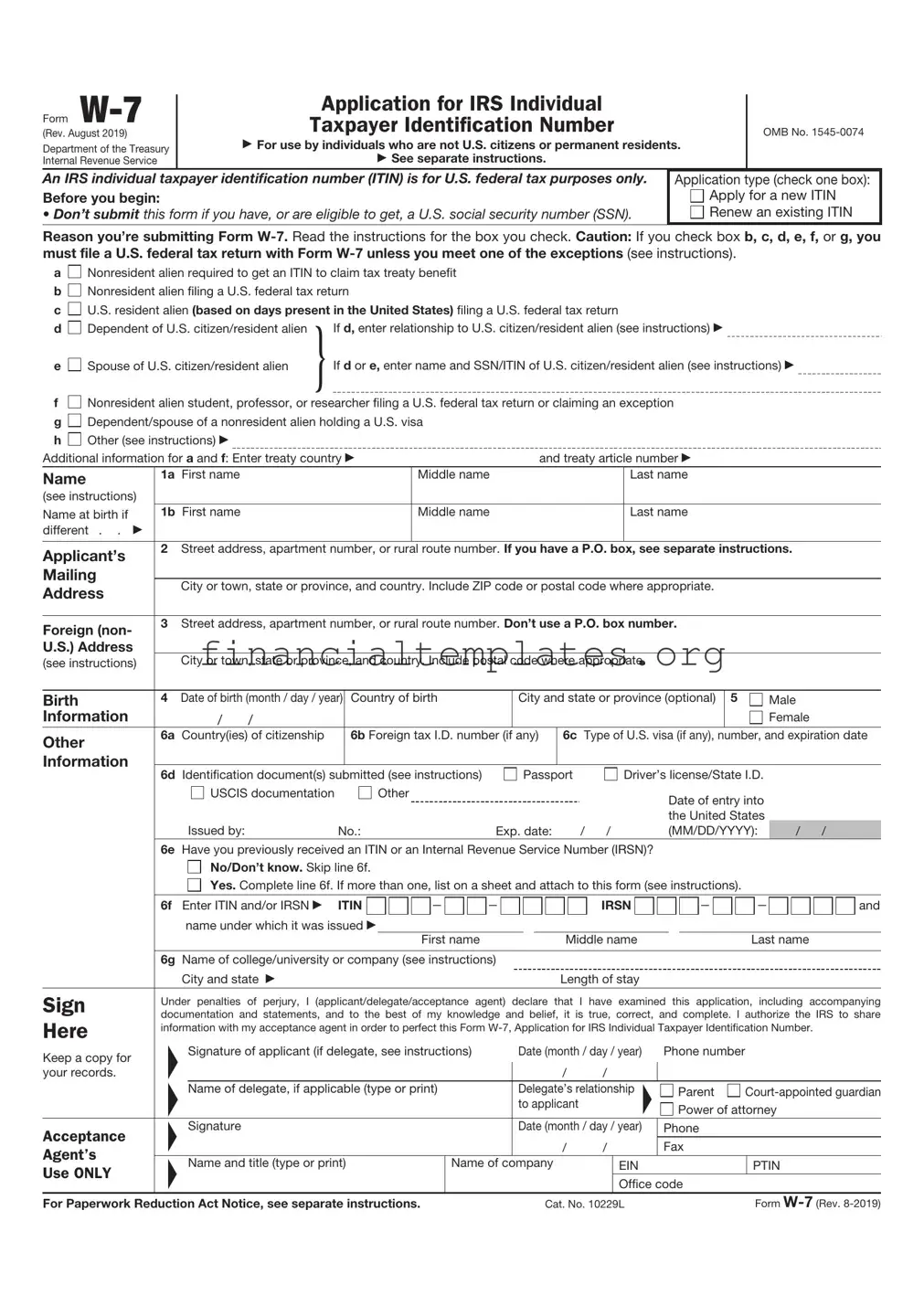The IRS 1040 form shares similarities with the W-7 form because both are essential when dealing with personal income tax matters. While the W-7 form is used to apply for an IRS Individual Taxpayer Identification Number (ITIN), the 1040 form is the standard federal income tax form used to report an individual’s annual income. Both forms are crucial for the IRS to determine the taxpayer's tax liabilities and ensure the correct amount of tax is paid or refunded.
The Form SS-4, Application for Employer Identification Number (EIN), is akin to the W-7 in that both involve obtaining identification numbers from the IRS. However, while an individual uses the W-7 to obtain an ITIN, the SS-4 is used by entities to obtain an EIN. These numbers are foundational for the IRS's ability to identify and track taxpayers and their tax liabilities.
Form W-8BEN, Certificate of Foreign Status of Beneficial Owner for United States Tax Withholding, is somewhat parallel to the W-7 form. While the W-7 allows individuals who are not eligible for a Social Security Number to file taxes, W-8BEN is used by foreign individuals to claim tax treaty benefits and exemptions from certain U.S. tax withholdings. Both forms address the tax responsibilities of individuals without U.S. citizenship but with U.S. tax reporting requirements.
Form W-9, Request for Taxpayer Identification Number and Certification, is used by U.S. persons to provide their taxpayer identification number to entities that pay them income. Like the W-7, the W-9 helps maintain accurate tax records. However, the W-7 is specifically for obtaining an ITIN, while the W-9 is for confirming an existing Taxpayer Identification Number (TIN), whether it’s a Social Security Number or an ITIN, to other parties.
Form 8822, Change of Address, though primarily for notifying the IRS of a change in address, shares a fundamental similarity with the W-7 as both involve updating personal information with the IRS to facilitate accurate tax administration. The W-7 updates a taxpayer’s identification records, while Form 8822 ensures the IRS has the correct address on file.
The Application for Automatic Extension of Time To File U.S. Individual Income Tax Return, known as Form 4868, is similar to the W-7 in its purpose of facilitating compliance with tax obligations. While the W-7 is about obtaining the necessary identification to file taxes, Form 4868 is used to request more time to file the actual tax returns, showing that both forms are instrumental in managing tax filing duties.
Form 8850, Pre-Screening Notice and Certification Request for the Work Opportunity Credit, is related to the W-7 in the operational aspect of tax filing and benefits. Form 8850 is used by employers to pre-screen and certify that an employee is eligible for the work opportunity tax credit. Like the W-7, which facilitates an individual’s ability to fulfill their tax responsibilities, Form 8850 is a step in the process to claim specific tax benefits.
Form 8962, Premium Tax Credit, is used to calculate the amount of premium tax credit an individual is eligible for and reconcile it with any advance payments of the credit. It correlates with the W-7 in that both are involved in the computation and reconciliation of taxes, ensuring that taxpayers either pay the correct amount or receive the appropriate refunds or credits due to them.
The Child Tax Credit Update Portal, while not a form in the traditional sense, functions in a related capacity to the W-7 by allowing individuals to update their tax information for specific credits. Similar to how the W-7 updates the IRS with necessary identification information, the portal enables taxpayers to update their status to accurately receive the Child Tax Credit, showing both tools are designed to aid in accurate tax administration.

